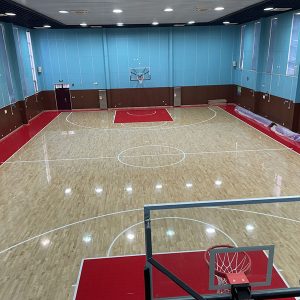Floor elasticity, measured by force reduction (FR) and vertical deformation (VD), is the cornerstone of athletic safety. Optimal FR (53-78%) and VD (2.3-5mm) ensure that 60-70% of impact energy is absorbed, reducing shin splints and stress fractures. A biomechanical analysis of 500 elite volleyball players found that floors with 12% porosity improved vertical jump efficiency by 8% through enhanced energy return.
Surface texture also plays a pivotal role. Laser-engraved micro-grooves, spaced 0.5mm apart, increase ball spin control by 20% in tennis. For wheelchair sports, specialized floors with 1.5mm embossing depth reduce rolling resistance by 30%. The article delves into how AI-driven simulations now predict athlete-floor interactions, enabling custom designs for specific sports.

Leave a Reply